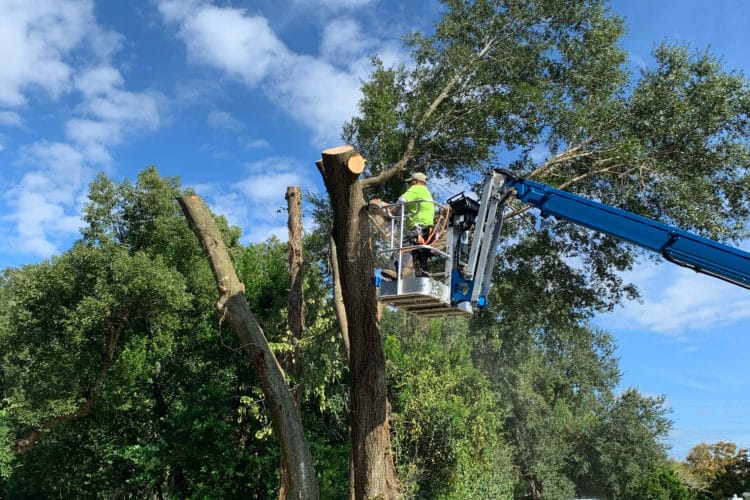Maintaining healthy trees is critical for both environmental health and landscape beauty. In this complete guide, we will look at the importance of master tree care, signals that your trees need attention, how to choose a reputable tree care firm, successful tree care procedures, and the environmental impact of tree care practices.
Why Master Tree Care is Essential?
Proper tree maintenance is necessary for a variety of reasons, including environmental benefits and personal safety. For starters, well-kept trees help to make the environment healthier by creating oxygen, absorbing harmful pollutants, and providing habitat for species. Furthermore, consistent tree maintenance improves the visual attractiveness of landscapes, raising property prices and boosting the general quality of life.

Furthermore, proper tree care improves tree health and longevity, lowering the risk of disease, pest infestation, and structural problems. Pruning dead or diseased branches, as well as ensuring regular feeding and watering, can help homeowners avoid possible hazards like falling limbs and tree failure during storms. Finally, investing in adequate tree care not only preserves the natural beauty of our surroundings but also ensures our health and the sustainability of our ecosystems for future generations.
Benefits of Master Tree Care Services
Professional tree care services provide various benefits that homeowners may be unable to obtain through DIY efforts. Firstly, these services contribute experience and specialized knowledge to tree care, guaranteeing the appropriate treatment of trees according to their type, age, and condition. Professional arborists also have access to specific equipment and tools, which allow them to do their duties securely and quickly.
Furthermore, choosing a professional tree care service saves homeowners time and effort because they handle everything from pruning and trimming to disease treatment and tree removal. By investing in expert services, homeowners can be confident that their trees will receive the care they require to thrive, contributing to the overall health and beauty of their landscape while reducing any risks and hazards associated with poorly maintained trees.
Signs Your Trees Need Attention
Recognizing indicators that your trees require attention is critical for keeping them healthy and avoiding potential problems. One prominent indicator is the appearance of dead or decaying branches, which might indicate disease, pests, or structural weakness. Furthermore, discolored or yellowing leaves, premature leaf loss, or stunted growth may signal nutrient deficits or root issues.
Furthermore, obvious degradation indications, such as cavities or fungal growth on the trunk or branches, can suggest internal decay or rot. Leaning or uprooted trees, along with cracks in the trunk or large branches, pose serious safety hazards and require immediate attention.
Other symptoms to look for include severe leaning, bark damage, or odd swelling around the tree’s base, which could signal insect infestations or diseases. Regularly inspecting your trees for these symptoms can help you discover problems early on and take proactive steps to fix them, guaranteeing your environment’s long-term health and stability.
Related Posts:
Choosing a Master Tree Care Service
When choosing a tree care service, it is critical to examine various aspects to ensure you select the best provider for your requirements. Begin by looking for local tree care providers and getting suggestions from neighbors, friends, or online reviews.
Once you’ve compiled a list of potential service providers, evaluate their experience and qualifications. Look for organizations that employ licensed arborists with specific training and a track record of offering high-quality tree care services.
Insurance coverage is another important concern. Ensure that the tree care firm has liability insurance to safeguard you and your property in the event of an accident or damage during the tree care process.
In addition, obtain numerous estimates from various companies and compare their services, pricing, and availability. A reputable tree service should produce a precise quote that includes the extent of work and associated fees.
Finally, don’t hesitate to seek recommendations from past clients and follow up to confirm their satisfaction with the service. Taking these steps allows you to confidently select a reputable tree care service that matches your individual needs while also ensuring the health and vitality of your trees.
Master Tree Care Techniques
Tree care strategies include a variety of practices aimed at improving trees’ health, development, and longevity. Pruning is a key strategy for improving tree structure, eliminating dead or diseased wood, and promoting healthy growth patterns. Making clean cuts at the branch collar is an example of proper pruning procedures that limit harm and infection risk.
Trimming is another important practice that involves shaping trees for aesthetic goals, such as preserving a desirable shape or size. Trimming also removes superfluous foliage, allowing sunshine and air circulation to reach the canopy and improving overall tree health.
In addition to pruning and trimming, tree care entails chores such as mulching, watering, and fertilizing. Mulching helps to keep moisture in the soil, controls soil temperature, and discourages weed development. Proper watering ensures that trees receive enough moisture, especially during dry spells, while fertilization offers critical nutrients for growth and development.
Furthermore, effective tree preservation methods include safeguarding trees from pests and diseases, reducing soil compaction, and preserving root systems. By applying these tree care strategies, homeowners can ensure their trees’ health and vitality, increasing the beauty and value of their landscapes for years to come.
FAQS
How often should I prune my trees?
Pruning is usually advised every 3–5 years, but the frequency varies based on the tree species and growth pace.
Are there any legal limitations on tree pruning?
Local legislation may limit tree pruning, especially for protected or heritage trees. Before pruning, consult with local authorities.
Can I cut my trees?
While DIY tree trimming is doable, having the right skills, tools, and safety information is critical to avoiding accidents and tree damage.
What is the ideal time of year to trim the trees?
The best time to trim trees is during the dormant season, which is typically late winter or early spring when the trees are less active and pruning wounds heal more quickly.
How can I improve the health of the soil around my trees?
Mulching, adequate watering, and preventing soil compaction all help to increase soil health and promote tree development.
Should I fertilize my trees?
To prevent overfertilization, fertilize trees sparingly and per soil test results.
Conclusion
Finally, mastering tree care is critical for sustaining healthy, vibrant trees that benefit our environment and our well-being. Homeowners may guarantee the longevity and vitality of their trees for future generations by knowing the need for good tree care, identifying symptoms of tree health issues, and applying effective tree care strategies.
Choosing the best tree care service requires taking into account criteria such as expertise, qualifications, insurance coverage, and customer feedback. Homeowners may be confident that their trees will receive the care they require to thrive if they hire a reputable service provider. Overall, investment in master tree care benefits not just individual properties but also contributes to a healthier and more sustainable environment. By focusing on tree health and following correct care procedures, homeowners can enjoy the beauty and benefits of trees for many years to come.




